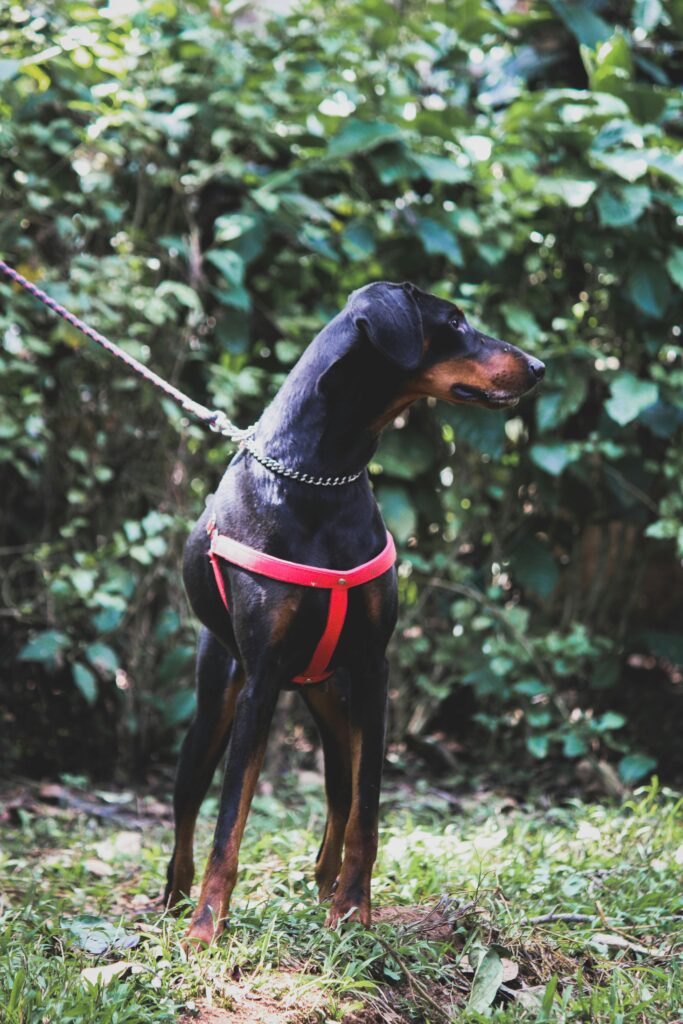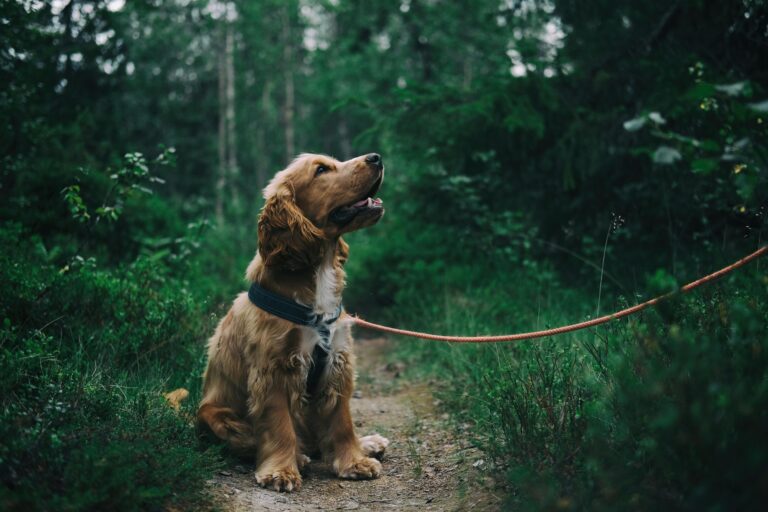As cooler temperatures roll into Houston, many dog owners start planning more outdoor adventures: trails, parks, festivals, and family hikes. But if your dog pulls like a freight train on the leash, those fun outings can quickly turn into frustration.
Loose leash walking is one of the most requested skills we teach at Off Leash K9 Training Houston. It’s not just about looking polished on walks. It’s about safety, focus, and enjoying quality time with your dog without stress.
Let’s break down what loose leash walking really means, why it matters, and how to teach your dog to do it consistently before your fall adventures begin.

What Is Loose Leash Walking?
Loose leash walking means your dog walks beside you or slightly ahead with slack in the leash. No pulling, no tension, and no constant corrections.
It’s different from heel training, which requires your dog to walk directly at your side with precision. Loose leash walking offers more freedom while still maintaining control. It’s perfect for parks, neighborhoods, and casual hikes.
Not sure which style is right for your lifestyle? We explore the key differences between the two in our blog on the role of consistency and routine in leash training, which can help you choose what works best for your goals.
Why This Skill Matters for Fall
Fall brings more distractions:
- Other dogs on trails
- Wildlife like squirrels or birds
- Seasonal events like festivals or farmers markets
- Kids on bikes or skateboards
- Leaf blowers, strollers, and new scents
A dog that pulls or lunges can ruin the experience. Even worse, it can cause injury to themselves or you. Mastering loose leash walking now gives you the control you need to safely enjoy public outings.
Start Training Before the Leaves Fall
Like any behavior, leash manners aren’t built overnight. Begin training in calm, low-distraction environments and work your way up.
Early-stage practice areas:
- Your backyard or driveway
- Empty parking lots or sidewalks
- Quiet parks during off-peak hours
Focus on engagement first. Reward your dog for checking in with you, walking by your side, and staying relaxed. Use food, praise, or their favorite toy to reinforce positive behavior.
Our Basic & Advanced Obedience Program includes dedicated leash handling techniques and distraction-proofing. It’s ideal for dogs who struggle on walks or get overstimulated in new places.
Tools That Can Help (and Hurt)
There are many tools marketed to improve leash walking, but not all of them are helpful or humane.
Tools we recommend:
- Standard 4-6 foot leash: Offers better control than retractable leashes
- Flat collar or martingale: Great for dogs with consistent training
- Training collar (when properly used): Can aid in communication with expert guidance
Tools to avoid:
- Retractable leashes: Encourage pulling and can cause injury
- Harnesses that clip at the back: Often increase pulling due to resistance reflex
- Head halters (for some dogs): Can cause neck strain if not used properly
For a full breakdown of collar vs. harness pros and cons, check out this helpful AKC comparison guide.
Teach Your Dog to Check In
The best leash walks happen when your dog is tuned into you, not everything else. Teaching your dog to “check in” by making eye contact is one of the most powerful habits you can build.
How to train it:
- In a quiet space, wait for your dog to glance at you
- The moment they do, say “Yes!” and reward
- Repeat often until they start offering the behavior naturally
Use check-ins as your foundation for leash walking in higher distraction areas.
What to Do When They Pull
It’s normal for your dog to make mistakes. Pulling can be corrected gently and effectively when done consistently.
Try this method:
- Stop immediately when the leash tightens
- Wait until your dog stops pulling or returns to your side
- Resume walking only when the leash is slack again
This teaches your dog that pulling gets them nowhere. Calm behavior gets them forward motion, which is something we emphasize in every Off Leash K9 session.
Practice Around Seasonal Distractions
Once your dog walks calmly in low-distraction environments, it’s time to up the challenge.
Try these:
- Walking near leaf blowers or rakes
- Practicing around other dogs at a distance
- Stopping for polite greetings with neighbors
- Visiting dog-friendly stores or outdoor markets
You’re not just walking. You’re reinforcing obedience, attention, and impulse control in the real world.
Leash Walking Is a Lifestyle
A leash walk isn’t just exercise. It’s a bonding experience, a leadership opportunity, and a form of structured mental stimulation. That’s why we don’t just teach leash skills. We help families make it a daily habit.
Whether your fall includes hiking in Sam Houston National Forest or walking through the Heights with a pumpkin spice latte, your dog should be a calm, reliable partner at your side.
Want calm walks, better focus, and fall adventures you’ll actually enjoy?
We can help you build that behavior step by step. Contact us today to schedule your leash walking evaluation.

